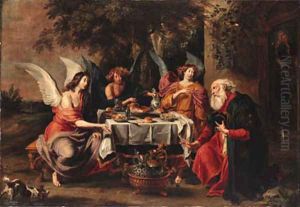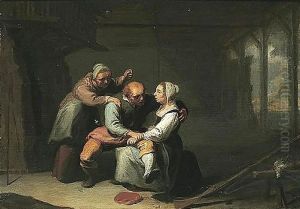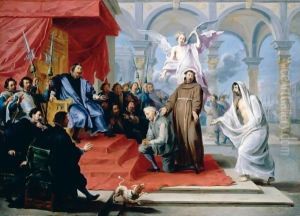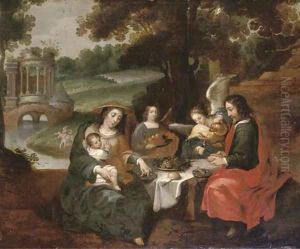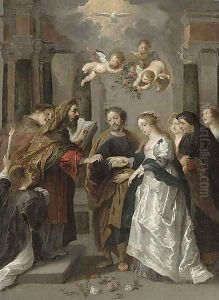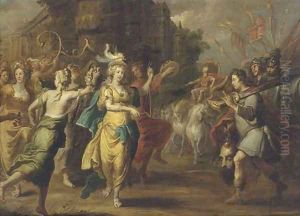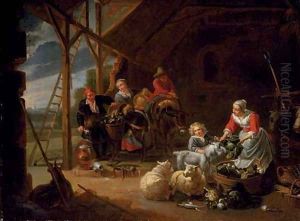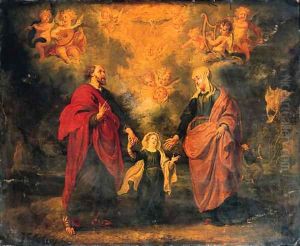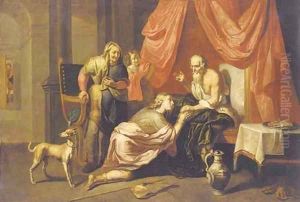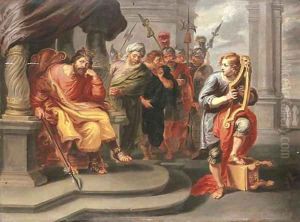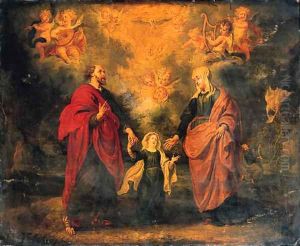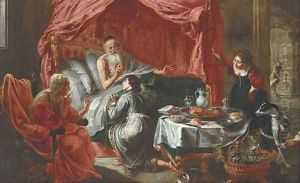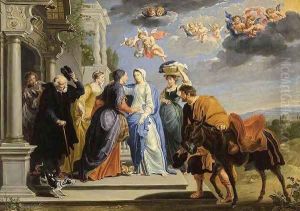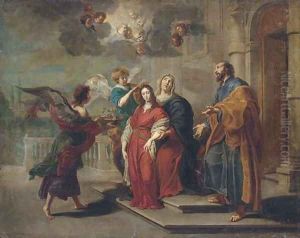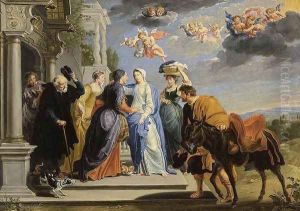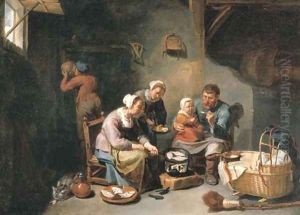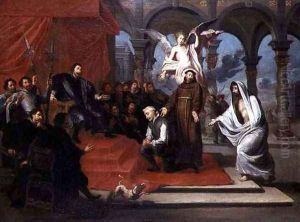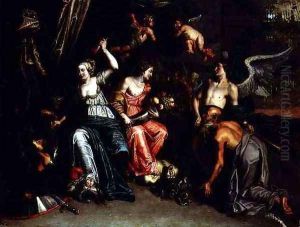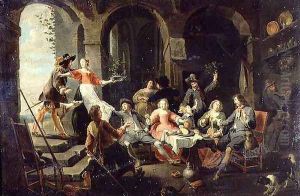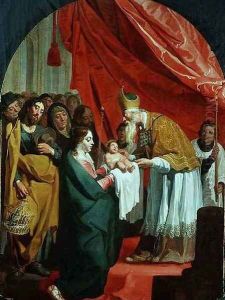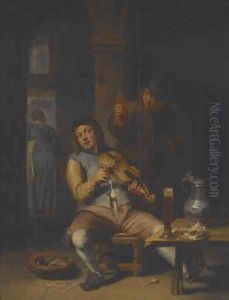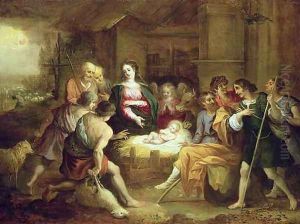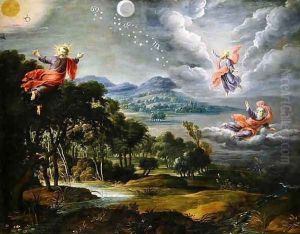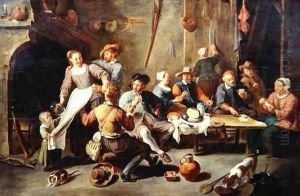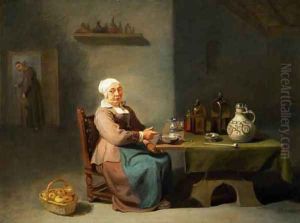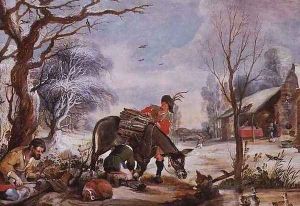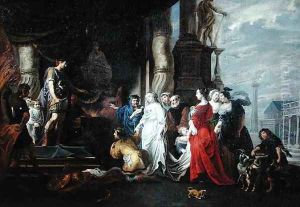Willem van, the Elder Herp Paintings
Willem van Herp the Elder was a Flemish painter born in Antwerp, Belgium, around 1614. He is known for his work during the Baroque period, which was characterized by dramatic expression, rich coloration, and bold manipulation of light and shadow. Van Herp was a versatile painter, and his oeuvre includes religious and mythological scenes, genre paintings, and landscapes.
Van Herp likely received his artistic training in the workshop of Rubens or one of Rubens' followers, as his style shows a strong influence of Peter Paul Rubens. He became a master in the Antwerp Guild of Saint Luke in 1637, which marked the beginning of his professional career as an independent artist. His works were appreciated for their narrative quality and attention to detail, often depicting intricate scenes with many figures.
Although not as well-known as some of his contemporaries, van Herp enjoyed a successful career and his paintings were sought after by collectors in his time. His compositions are typically Baroque in their sensibility, filled with movement and energy. He was particularly adept at rendering textures and the play of light on different surfaces, a skill that brought his depictions to life.
Van Herp's paintings were frequently reproduced by engravers, which helped to spread his fame beyond Antwerp. His son, Willem van Herp the Younger, also became a painter, although the father's work is generally considered to be of higher quality. Willem van Herp the Elder's death is recorded around 1677. While his work may not have had the enduring fame of some of his peers, his contribution to Flemish Baroque painting is noteworthy, and his works can be found in various museums and collections across Europe.
